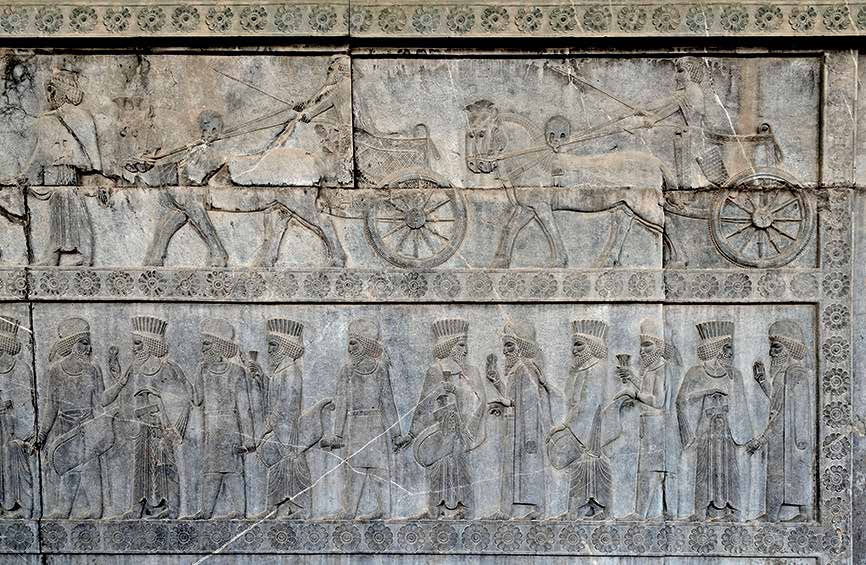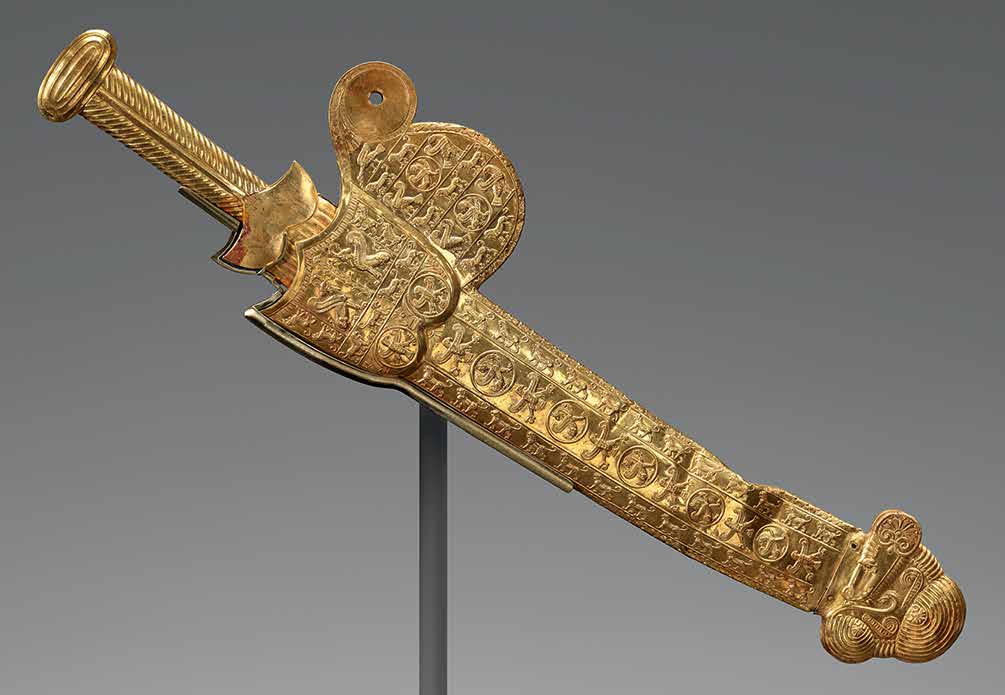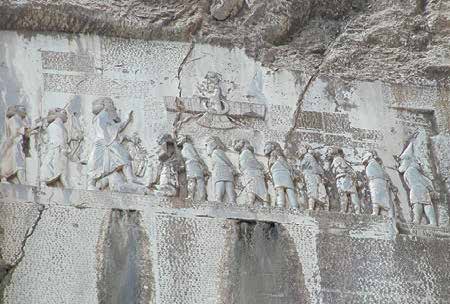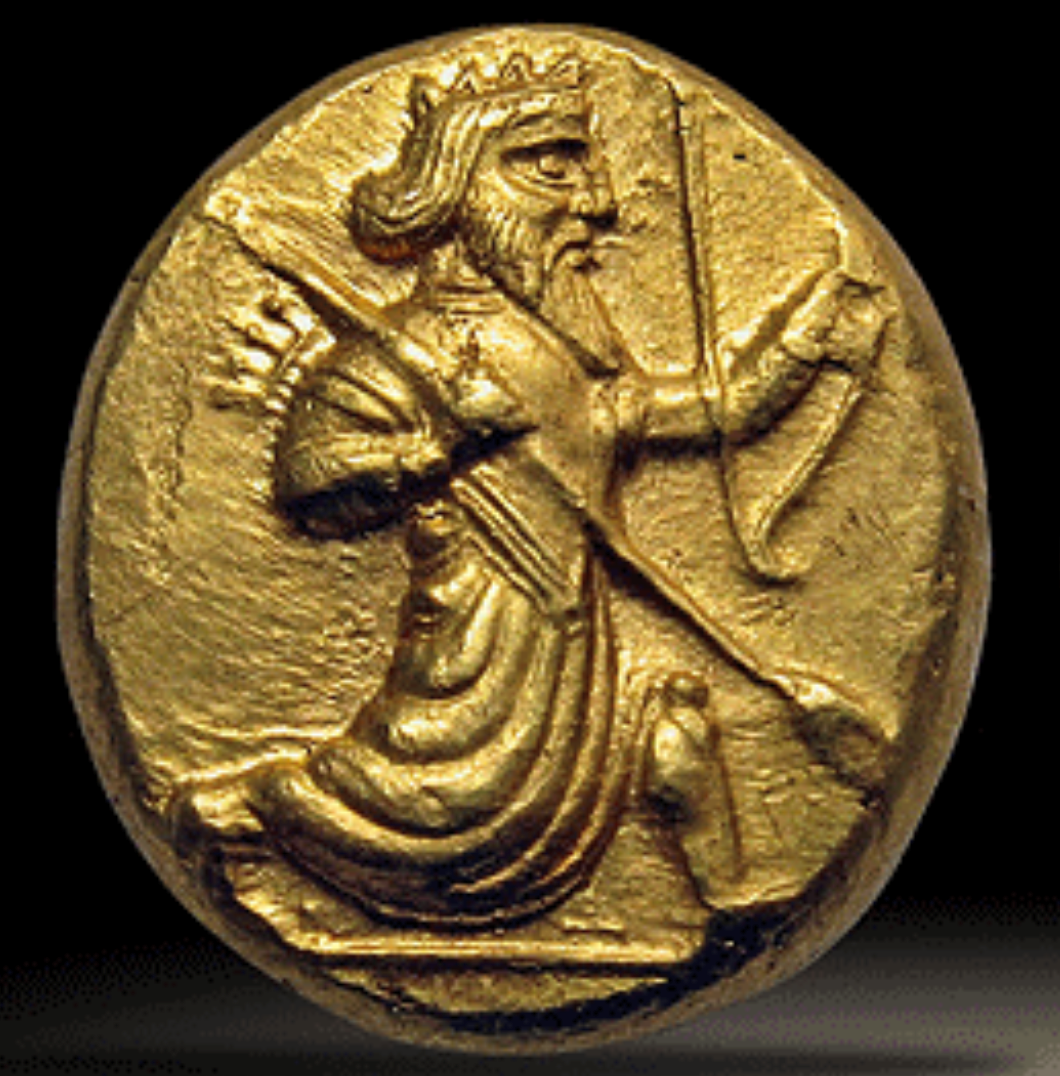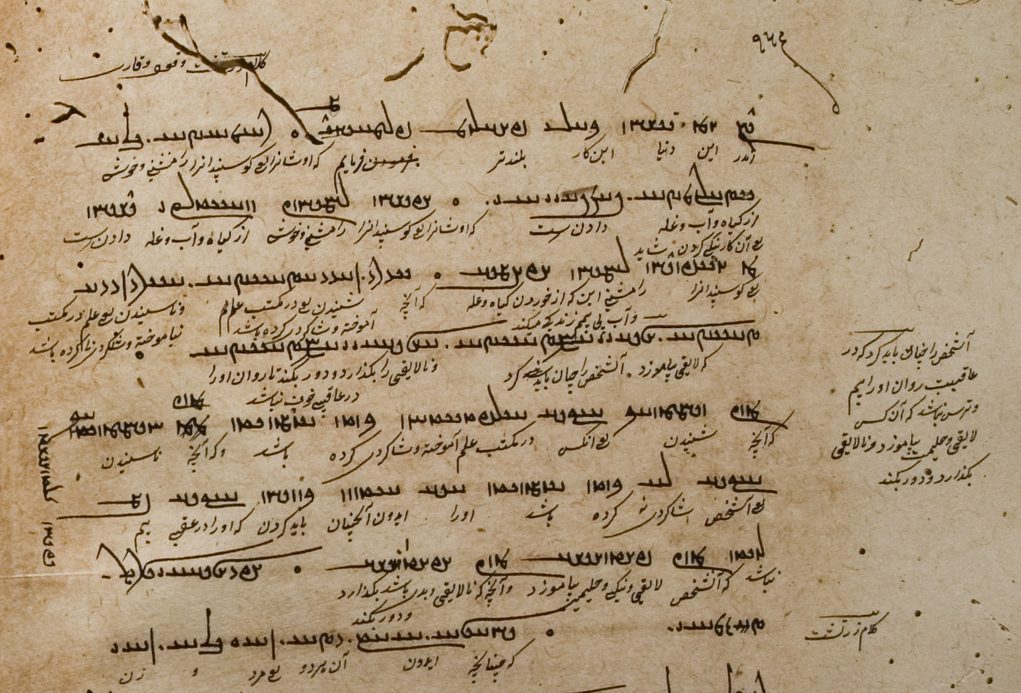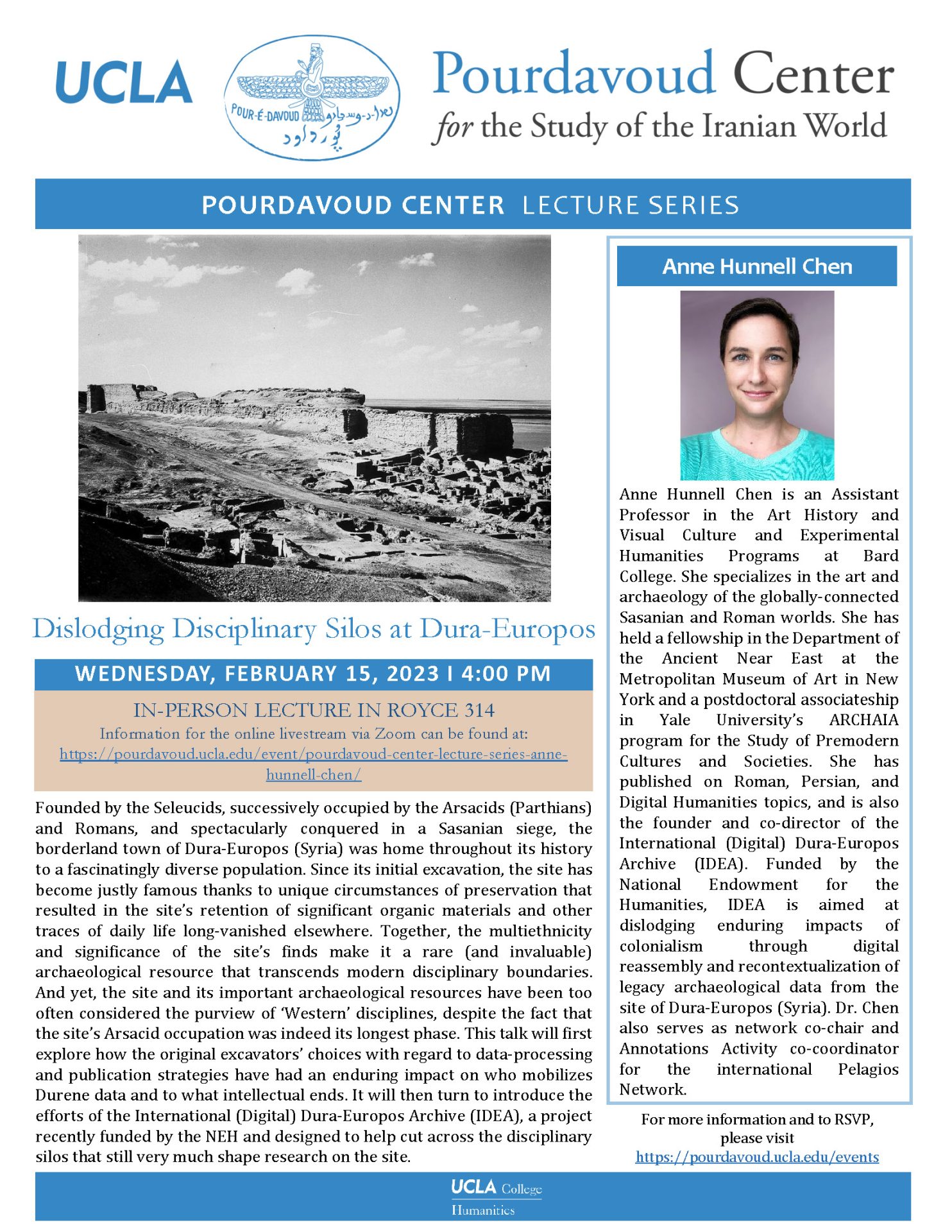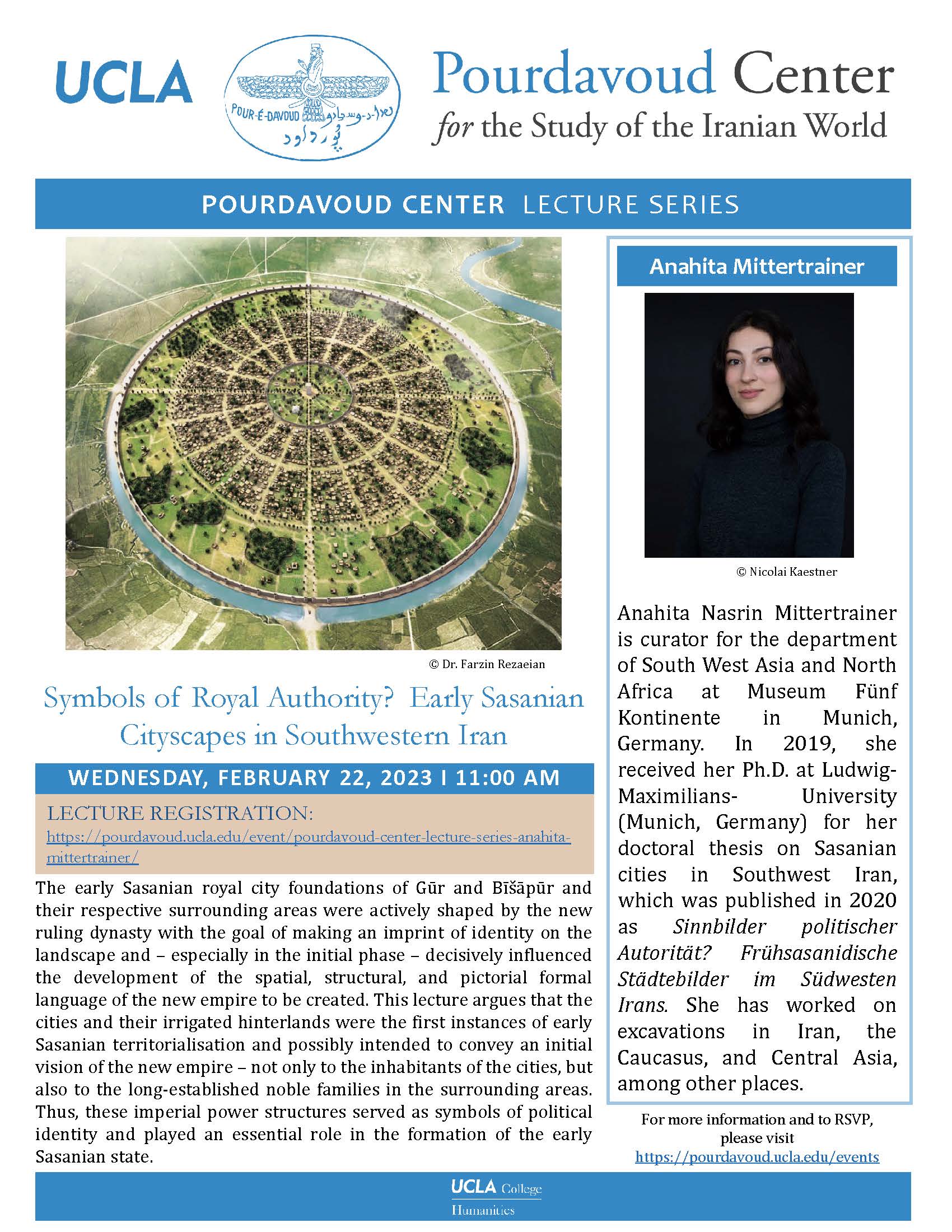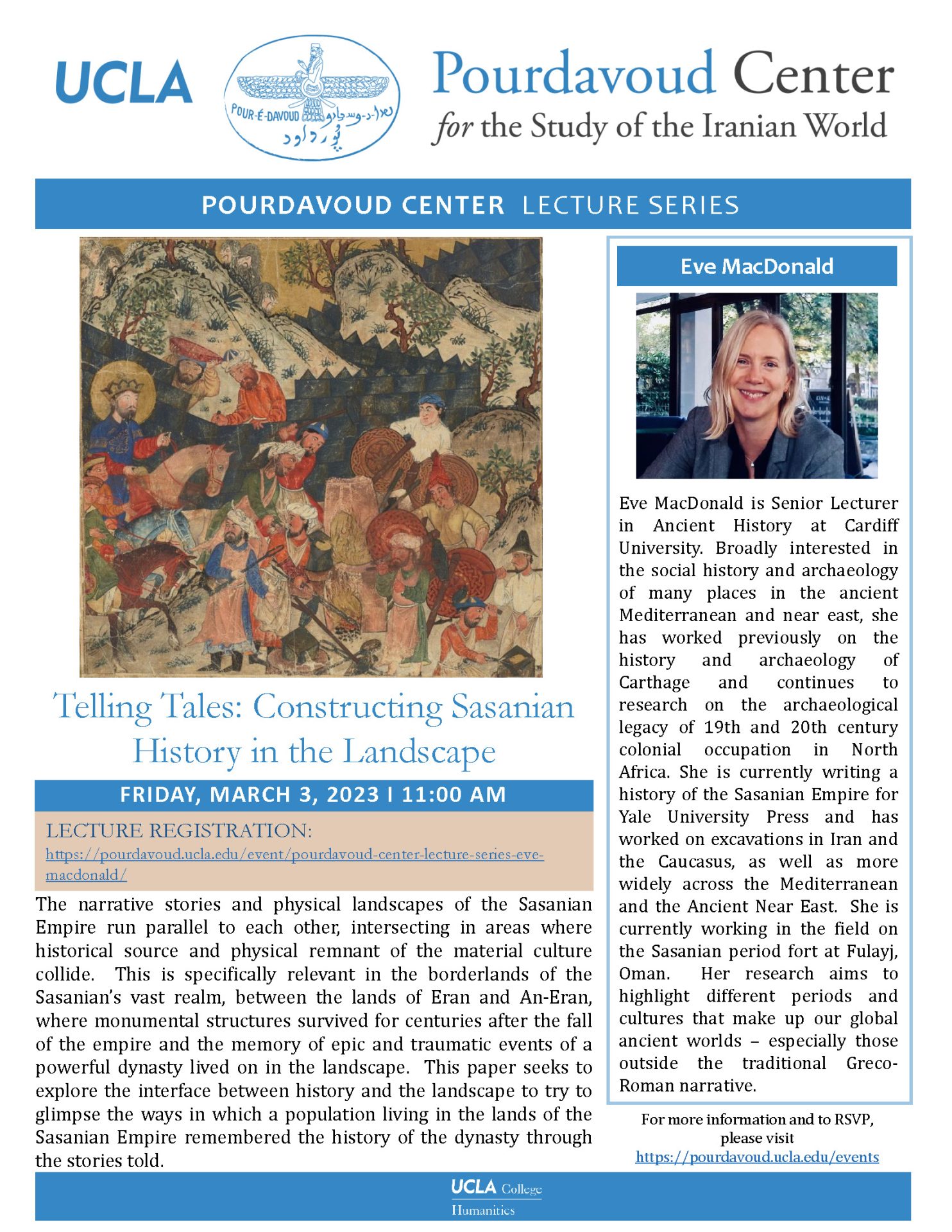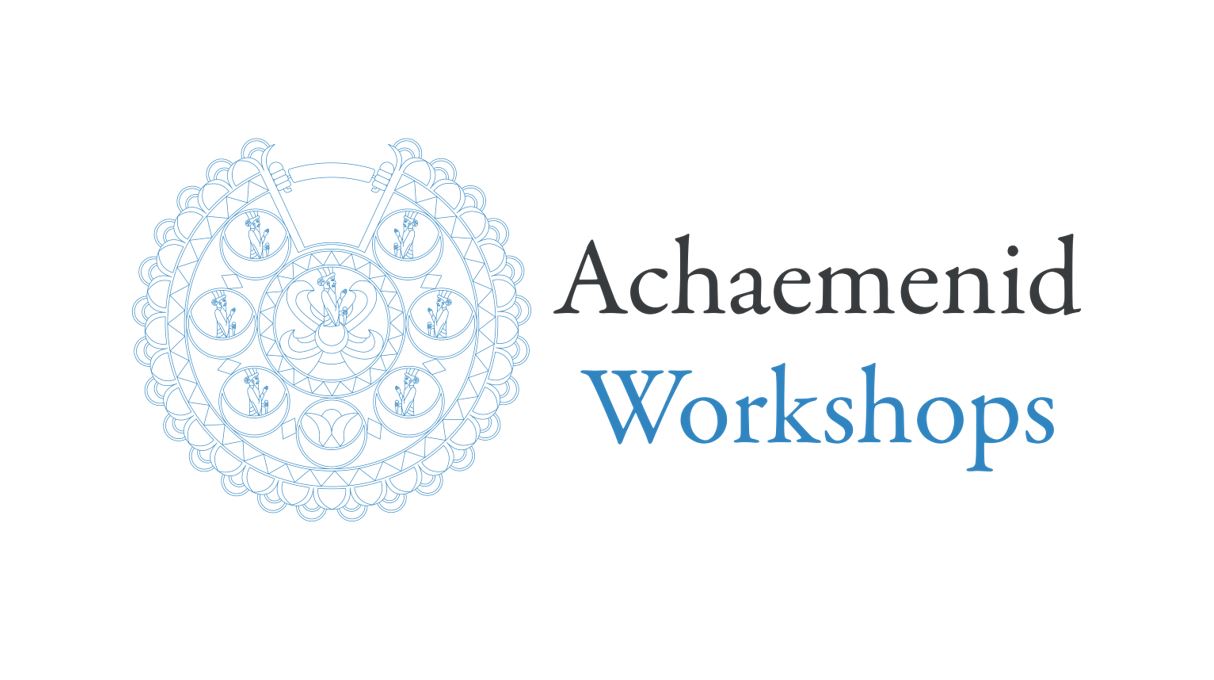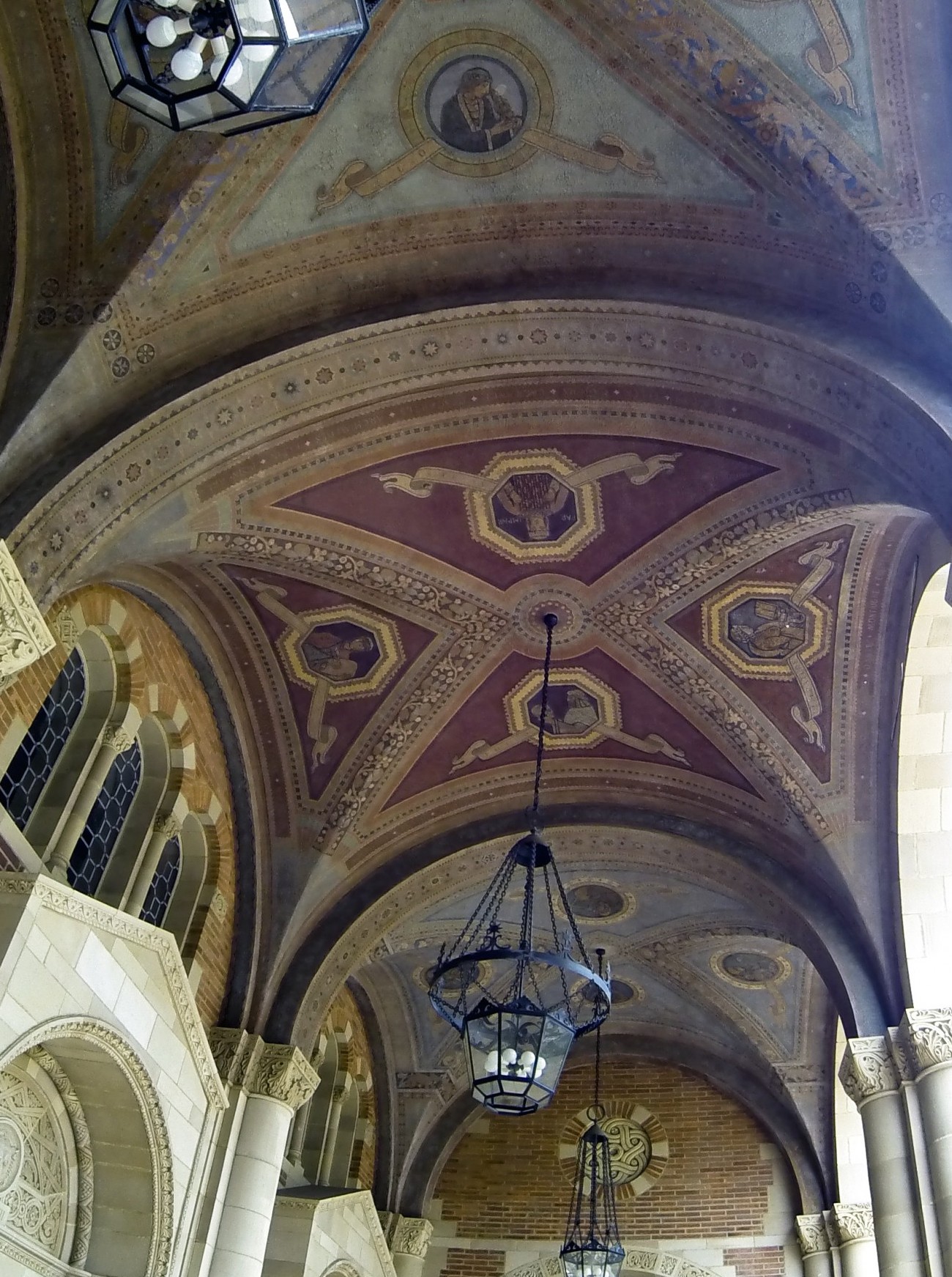Pourdavoud Center
Biennial Ehsan Yarshater Lecture Series – Whither the Achaemenid Empire? Towards a New Connected History of Afro-Eurasia in Antiquity
314 Royce HallThe 2022 Biennial Ehsan Yarshater Lecture Series Featuring Professor Robert Rollinger (University of Innsbruck) The Achaemenid Persian World Empire The series of lectures offers a novel and fresh perspective on one of the largest and most successful empires in world history, namely, the Achaemenid Persian World Empire (sixth to fourth century BCE), the central power...
Biennial Ehsan Yarshater Lecture Series – Space and Universality: The Long Life of the Achaemenid Mental Map in Antiquity and Beyond (Sixth Century BCE – Sixth Century CE)
314 Royce HallThe 2022 Biennial Ehsan Yarshater Lecture Series Featuring Professor Robert Rollinger (University of Innsbruck) The Achaemenid Persian World Empire The series of lectures offers a novel and fresh perspective on one of the largest and most successful empires in world history, namely, the Achaemenid Persian World Empire (sixth to fourth century BCE), the central power...
Biennial Ehsan Yarshater Lecture Series – Empire and Borderlands at Interplay: A Structural Approach (First Millennium BCE – First Millennium CE)
314 Royce HallThe 2022 Biennial Ehsan Yarshater Lecture Series Featuring Professor Robert Rollinger (University of Innsbruck) The Achaemenid Persian World Empire The series of lectures offers a novel and fresh perspective on one of the largest and most successful empires in world history, namely, the Achaemenid Persian World Empire (sixth to fourth century BCE), the central power...
The World of Ancient Iran and the West
314 Royce HallAn International Symposium Convened by M. Rahim Shayegan (University of California, Los Angeles) and Jeffrey Spier (J. Paul Getty Museum) May 19–20, 2022 | 314 Royce Hall Morning Refreshments: 8:00 am Symposium Begins: 9:00 am The Pourdavoud Center for the Study of the Iranian World and the J. Paul Getty Museum are convening for a...
Pourdavoud Center Lecture Series: Arash Zeini
The Birth of the Abestāg from the Spirit of Philology Scholars have often discussed Zoroastrianism as an ancient Iranian religion that reaches back thousands of years into the middle of the second millennium BCE. For a long time, the idea of monolithic continuity has dominated the scholarly discourse in the study of this religion. While...
Pourdavoud Center Lecture Series: Anne Hunnell Chen
314 Royce HallDislodging Disciplinary Silos at Dura-Europos Founded by the Seleucids, successively occupied by the Arsacids (Parthians) and Romans, and spectacularly conquered in a Sasanian siege, the borderland town of Dura-Europos (Syria) was home throughout its history to a fascinatingly diverse population. Since its initial excavation, the site has become justly famous thanks to unique circumstances of...
Pourdavoud Center Lecture Series: Anahita Mittertrainer
Symbols of Royal Authority? Early Sasanian Cityscapes in Southwestern Iran The early Sasanian royal city foundations of Gūr and Bīšāpūr and their respective surrounding areas were actively shaped by the new ruling dynasty with the goal of making an imprint of identity on the landscape and – especially in the initial phase – decisively...
Pourdavoud Center Lecture Series: Eve MacDonald
Telling Tales: Constructing Sasanian History in the Landscape The narrative stories and physical landscapes of the Sasanian Empire run parallel to each other, intersecting in areas where historical source and physical remnant of the material culture collide. This is specifically relevant in the borderlands of the Sasanian’s vast realm, between the lands of Eran and...
AchWorks 1 – Identity, Alterity, and the Imperial Impress in the Achaemenid World
314 Royce HallIdentity, Alterity, and the Imperial Impress in the Achaemenid World The Inaugural Symposium of the Achaemenid Workshops Series April 12–14, 2023 | 314 Royce Hall Watch Livestream Morning refreshments and check-in begin at 8:00 am. Panels begin at 9:00 am. The Pourdavoud Center for the Study of the Iranian World is convening an international...
Pourdavoud Center Fall Reception 2023
Royce 306Pourdavoud Center Fall 2023 Welcome Reception Wednesday, October 4, 2023 4:00 – 6:00 pm Royce Hall 306 Registration Required The Pourdavoud Center for the Study of the Iranian World invites you to join us for a fall reception. In the company of our supporters, colleagues, academic affiliates, students, and esteemed guests, we shall be...


